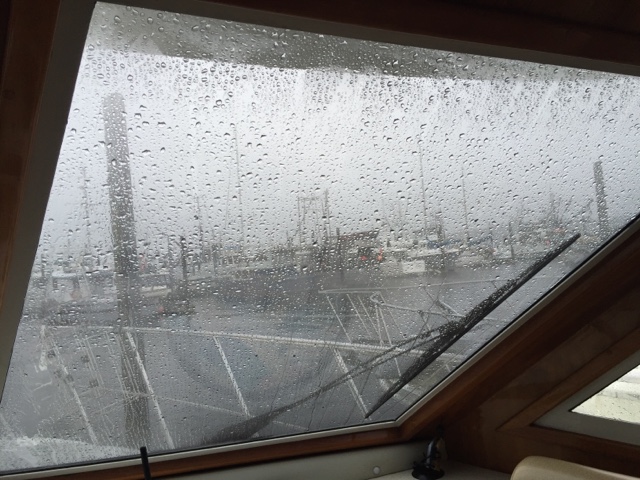It was a good 3-night stop, especially after Saturday's downpour ended. We did laundry, grocery shopped, bought stuff at the hardware store, re-filled a propane tank, and ate the fruits and other food we're not allowed to carry into Canada.
And we changed 12 gallons of oil in the two Volvo Penta engines that inhabit the engine room. This would be any easy task, except the oil filters on each engine are on the engine's starboard side: easy to reach in the center of the room on the port engine; but the filters on the starboard engine are between the engine and the hull, in a very tight spot to climb into. Bob is too tall, too big and too inflexible to get back there, so Cathryn has to do it.
That's why Bob calls this Cathryn's oil changer pump, and why he secures the hose with a pink Velcro strap when not in use. Amusing guy, isn't he?
And he invested a small fortune in filter wrenches to find one that would overcome Cathryn's relative (to him) lack of strength, so she can remove the 4 tight filters without his help.
And he helps carry the three 5-gallon buckets of used oil up the steep ramp from the dock to the disposal shack.
The last night in Ketchikan, Greg and Terry, staying in the same marina, came aboard for dinner.
These are the friends from Port Angeles, WA who took us for two weeks on their 60-foot pilothouse trawler to travel the Inside Passage to Alaska in 2009. That experience altered our lives, in that it fired our imaginations about new possibilities now that we were retired. We never imagined we'd be able to make such a trip alone, in our own boat. So we're grateful to Greg and Terry for their role in showing us what ordinary people like us can do, with hard work and lots of learning.
We had a wonderful evening together.





















































